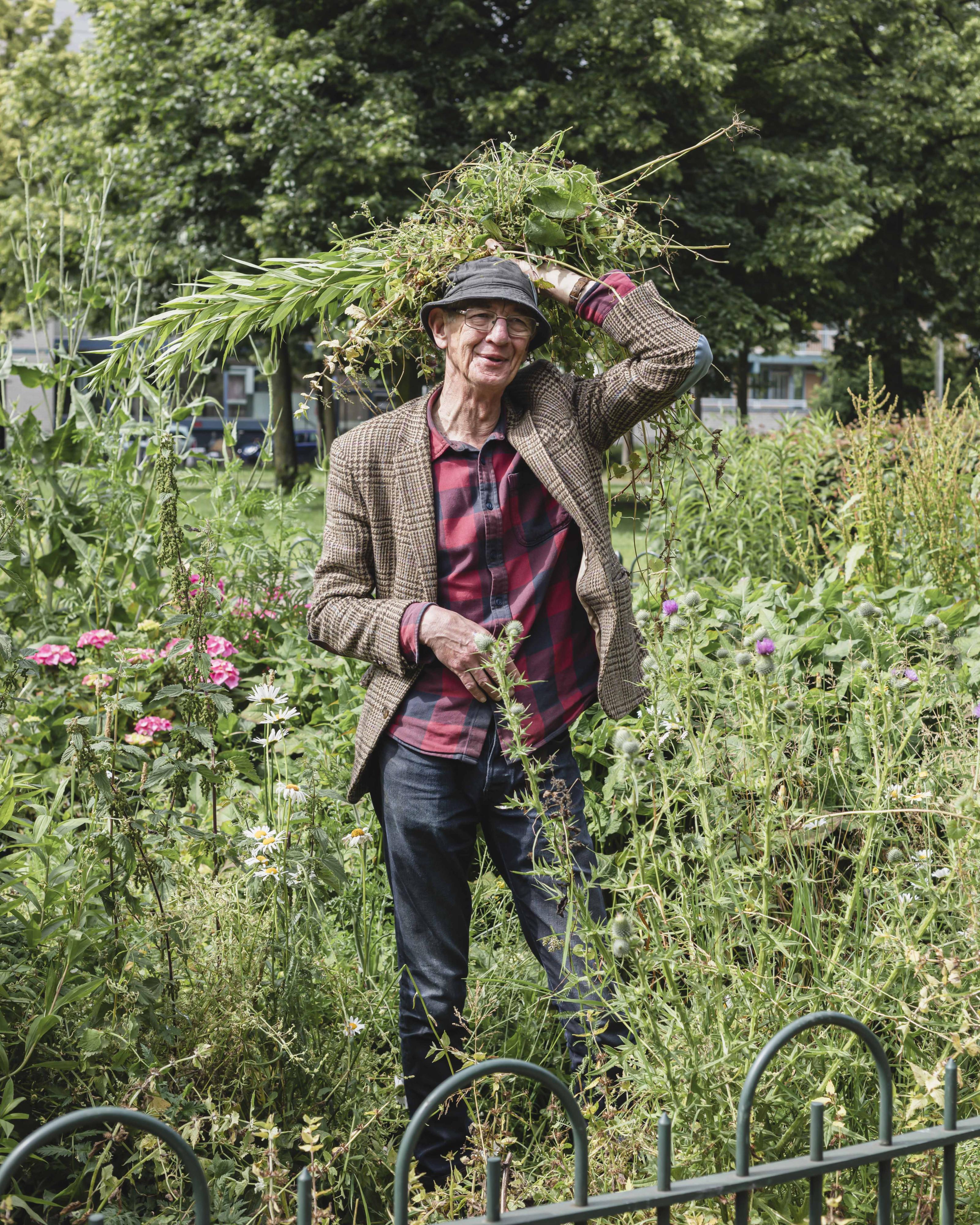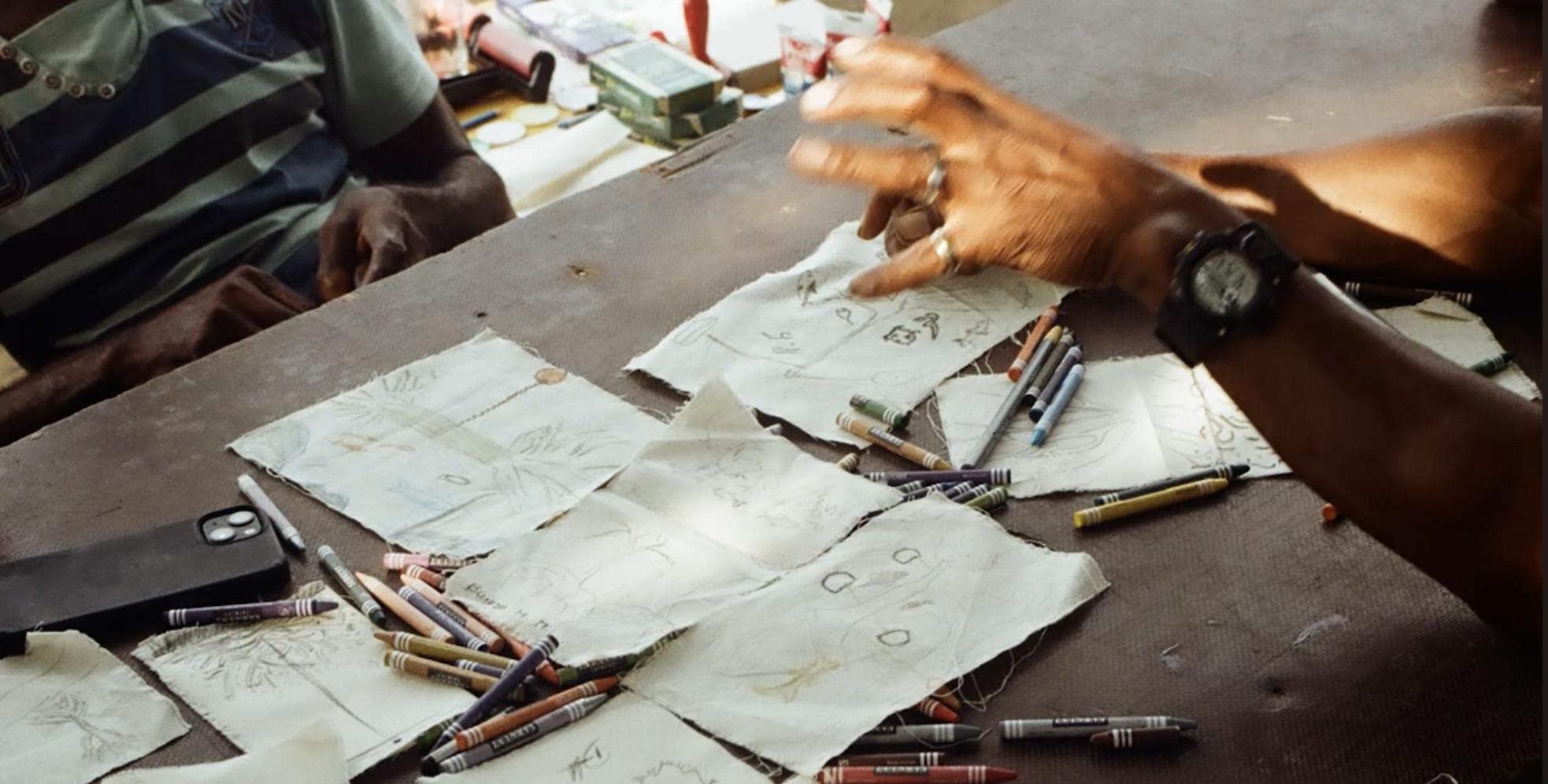Who builds towards a green future on a daily basis? To show how big ideas and visions find their way into reality, "Botanical Monuments" is part of this edition of the biennial: a collection of Rotterdams community initiatives around urban nature. They represent the ambition of the IABR to change the relationship between architecture and nature. But how does this ambition come to life in and around the city, who are the people behind big visions and what can we learn from them? Sabine and Jocelyn create the series "Hope Sowers" and engage with those taking steps towards an architecture that, in collaboration with nature, builds for future generations.
One of our stops is Park 1943. Rini Biemans, a former artist and doctor, manages the park, which spans about one and a half hectares of native nature where "there's no such thing as weeds," as he puts it. The park includes a lawn, side gardens, flower beds that you are free to roam through, a baby playground, and is a popular spot for residents of the Tussendijken neighborhood. For Rini, Park 1943 is not just a park, but also a critical manifesto against conventional urban green management, often seen as "ecocide". "We are 25 years behind," complains Rini, "the municipality settled on ideas on how to manage nature in cities from the 50s. The city spends a lot of money on planting non-native greenery, even more to keep it looking perfect, while it is already perfect in itself. It's like marrying a woman and asking her to never change," jokes the doctor.
What exactly does Rini do differently here than other parks that are publicly managed? "Well, just let nature take its course. Let it grow organically. We don’t weed, because that is pure destruction of native nature that is so valuable. On fallow lands, fast-growing pioneer plants often appear, which are usually removed by city workers, but by letting nature run free, a richer diversity of species emerges. Here, we celebrate ordinary plants. Practical plants that are good for the green experience but uninteresting to insects, you won't find here." It’s a simple, cost-effective, and effective approach. "In five years, we haven’t bought a single plant, and yet the diversity of species in our garden has grown immensely," Rini proudly shares.
Rini jokes a lot and tells many stories, but behind them lies a profound vision. The former doctor advocates for integrating an ecological perspective and sees people, plants, and animals as a unity. "The world also experiences us through thistles and nettles, can you imagine that?" he asks, referring to a deeper connection with the world around us, where we think less from a human-centric and more from an environmental and all-encompassing perspective. "I strive for a worldview where we see ourselves as part of the whole. People do not consider themselves part of nature. That's why plants are treated this way, and that's what I want to change," Biemans explains.
We walk along the narrow paths that meander through the verges. Unlike other parks, you are free to wander through the beds and explore here. We wander off, both in the garden and into the many unique perspectives Rini offers us to see nature, the city, and our own role as humans differently. Meanwhile, Rini rigorously pulls plants from the ground. “One of our methods here is to mimic grazing. Randomly clearing spots from the ground. This increases the complexity of the environment, which attracts more light and new plant species.” Rini is not alone in his work, luckily. Volunteers play a crucial role in managing Park 1943. “We have about 30 volunteers from all walks of life, nationalities, and backgrounds - often people with some emotional luggage find safe ground here to work with nature.”
Rini's background as an artist is clearly noticeable, especially in his aesthetic vision of how certain parts of the garden should look. He views the outdoor space as a canvas that can be arranged, and enthusiastically explains how he plans to prune the hedges with his team next season. But Rini's plans go beyond the park we are now in: he dreams that his approach to green management will be adopted by other cities. "This park shows how letting go of control and embracing natural processes can lead to a thriving ecosystem, even in an urban setting, if you consider nature as a collaborative partner," he shares with us.
Curious about Park 1943? Click here for their spot on the Botanical Monuments route. Opening hours, activities, and more information can be found here




